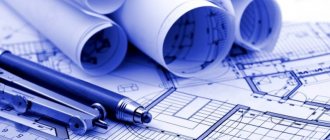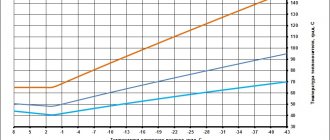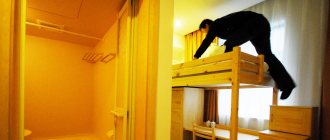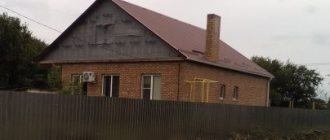Home / Uncategorized / Built-in Non-Residential Premises This
To register for cadastral registration, the premises must simultaneously have two characteristics: isolation and isolation. At the same time, isolation as a sign of a room is a spatial characteristic indicating that part of a building or structure is limited by building structures. At the same time, isolation is a functional characteristic, reflecting the fact that the premises have an independent purpose, a separate entrance, are not used for access to another premises, access to the common property of the owners of premises in the building, utilities (clause 4 of the Review of Judicial Practice in Cases related to challenging the refusal to carry out cadastral registration"; approved by the Presidium of the Supreme Court of the Russian Federation on November 30, 2016. See the full text of paragraph 4 of the Review in the attachment to the article "Premises are... Definition of the concept, types and characteristics of premises").
Built-in and attached non-residential premises are premises located within the dimensions of a residential building and in volumes extended beyond the dimensions of a residential building by more than 1.5 m (“SP 31-107-2004. Code of rules for design and construction. Architectural and planning solutions for multi-apartment residential buildings").
According to clause 1.2. An indication to the tenant that this is my property should be in the preamble of the agreement. Why, on the basis of what, I have the right to offer you something of my own, and it’s up to you to agree or not. . . . . . Yes, because I am the owner, not the authorized one.... But, at the same time, the author of the text did not indicate the rules governing legal relations in the rental sector!
- In addition to the building structure, a reflection of the presence of access roads, passages, if any are present and are an integral part of the structure or premises...,
- the state of the premises’ construction, properly documented, the presence of utilities for the life support of the premises’ building, energy-carrying communications, pipelines, heat and water supply, fire extinguishing, alarm systems. . .,
- with the attachment of a package of technical documentation (apparently the author is not familiar with such a concept... at all.....), which includes a floor plan of the building as a whole, designation of the boundaries of the premises allocated for rent (built-in), indication of passages, approaches, evacuation directions, diagram of all electrical, pipe, heat pipelines, boundaries of transition connections, indicated access points to technological service points, indication of the tenant’s connection points to energy-carrying lines, if required, the presence and installation of control devices for received life support media…. , (water, sewerage, heat.)
Legal advice: before buying non-residential premises in an apartment building for a store, you need to familiarize yourself with all the requirements in advance. Sometimes it is easier to refuse the purchase and look for another property if the premises largely do not meet the criteria established by law.
Almost all new apartment buildings have their own parking lots. Or there are garages nearby. It will not be possible to place a store in an underground parking lot. To do this, you need the consent of the owners and permission from the administration, and with a high degree of probability it will not be given.
Non-residential premises with a window built into the building
Most citizens do not distinguish between the legal status of common property and non-residential premises. The entrance, attic, elevator and basement are considered common areas. Non-residential premises in apartment buildings include cafes, shops, offices and other organizations. A special place is occupied by domestic non-residential premises in which there are studios, shops, and social welfare institutions.
- The main premises are provided for the implementation of the main goals and objectives of the building, in which functional processes take place.
- An auxiliary premises, according to its functional purpose, serves one, several premises or the entire building and cannot be independently used by persons who are not the owners of the building or premises in this building. This category refers to objects that are inextricably linked with the life support systems of the building.
MUP Pharmacy. A lease agreement was concluded for a state-owned land plot for a period of 10 years. In 2015, the land committee forces us to terminate the land lease agreement. We have two of them: the pharmacy is located in a residential building (built-in premises), the pharmacy is located in an attached non-residential premises of a built-in non-residential premises in a building (residential building). The Land Committee refers to the fact that in connection with the change in the Housing Code of the Russian Federation, we, as a built-in premises, are exempt from paying land tax. Our Federal Tax Service refers to the fact that land cannot be free.
The Land Committee answers by phone that you can terminate the lease agreement for a state-owned land plot and you do not have to pay land tax on the built-in premises, but on the attached, built-in premises you need to look at the Housing and Tax Codes.
Timing and cost
Our company specializes in coordinating building extensions. We have extensive experience in approvals. If you contact us, the process will be much faster. You will not have any refusals or work stoppages. We have affordable prices and high quality work. We always follow the necessary standards and laws.
Several timing options are possible. You can carry out the procedure as usual, then the procedure is carried out as specified by government agencies. This is about a month for one cut. The process will take from four to six months. You can carry out the work in a shortened form, with our specialists. Then it will take you up to two months.
Coordination of an extension in a built-in/attached room of an apartment building
- it is prohibited to impair access to the building's utility networks and disconnecting devices;
- it is impossible to eliminate or reduce the cross-section of natural ventilation channels;
- it is prohibited to increase the load on load-bearing structures above the standard values;
- You cannot make heated floors connected to central heating systems.
If the premises are an independent non-residential object, the above documents will be applied only in a limited form. For example, the Housing Code of the Russian Federation and SP 54.13330.2016 are not applicable in this case. Design solutions for a non-residential building must comply with the safety standards of Laws No. 384-FZ and No. 123-FZ, SP 118.13330.2012, Resolution No. 432-PP.
What work is allowed to be carried out in built-in and attached premises of apartment buildings?
If the building is still related to the apartment building, then the list of works will be determined according to decree number 508-PP. There is a list of work that can be carried out. For example, this is installation, dismantling, moving structures that are located indoors, combining different rooms, creating openings for windows and doors, as well as increasing or decreasing them. In addition, you can make an exit to the street, arrange entrance groups, create canopies and stairs. Also taken into account are other works that do not worsen the parameters of the apartment building, do not destroy common property, and do not create barriers to its use.
In this resolution one can also see a ban on work. We will describe them below. If this premises is not included in the area of an apartment building, then the procedure for permitted work can be found out according to law number 384-FZ, SP 118.13 330.2012, according to resolution number 432-PP.
Floor plan
How to correctly classify real estate? Types of non-residential premises
In Russian legislation, the term “detached building” is not clearly defined by regulations. In legal practice, this term refers to an architectural object that is not united with another building by a common foundation and communications.
- The main premises are provided for the implementation of the main goals and objectives of the building, in which functional processes take place.
- An auxiliary premises, according to its functional purpose, serves one, several premises or the entire building and cannot be independently used by persons who are not the owners of the building or premises in this building. This category refers to objects that are inextricably linked with the life support systems of the building.
Terms; Attached; And; Built-in; premises
In short. In the design specifications, the customer asked to design an ATTACHED administrative building to an unfinished warehouse building. In the first option, we designed a new administrative building a few meters (no more than 3 meters) from the existing warehouse frame and connected it to the warehouse by a passage. The customer agreed on the second option, where the administrative and administrative building is located in two bays of the existing frame of an unfinished warehouse. Of course, between two different categories (oh! I said it) there is a fire wall. After that, we made changes to the terms of reference and... accordingly, in the estimate, as for BUILT-IN premises. As a result, the Customer refused to approve the new terms of reference, citing the fact that the second option was an ATTACHED room. Based on the terms and definitions I found, to my horror, he is right.
Again a quote from SNiP 2.09.04-87 Insertion, installation - part of a building intended to accommodate administrative and utility premises, located within the industrial building along its entire height and width (insert), part of its height or width (integration) and allocated with fire protection obstacles.
When collecting fees for the maintenance of apartment building property in full, the courts often do not take into account that the owners of non-residential premises often independently perform the functions that a management company should perform. At the same time, we note that against the backdrop of a significant number of court cases in which judges chose to turn a blind eye to the real state of affairs and use ready-made tariffs (which, of course, is easier than assessing the extent to which the premises are connected with apartment buildings), court decisions appeared allowing to protect the interests of owners of non-residential premises. Thus, when considering the claim of the State Unitary Enterprise “Directorate of the Single Customer of the Sokolniki District” of Moscow for the recovery from the Lena Makashova Fashion House CJSC of debt for payment of expenses for the maintenance of the common property of the apartment building, the courts of the first and appellate instances established that the non-residential premises of the CJSC are built-in attached to a multi-apartment residential building, located on the 1st and 2nd floors, they represent an independent object, which was built according to a separate project from the residential building. The defendant’s premises have separate entrances and exits to the internal premises, do not have any constructive connection with the residential premises of the apartment building, are not interconnected either functionally or technologically, have their own load-bearing walls on which the floor slabs rest, their own roof, separate from home heating systems, water supply, sewerage, energy supply, ventilation, etc. From the moment non-residential premises were accepted for operation to the present, the defendant has entered into independent agreements with resource supply organizations. Considering the independence of communications located on the defendant’s premises from the communications systems of the residential part of the house, which is confirmed by construction and technical expertise, the courts came to the correct conclusion that Lena Makashova Fashion House CJSC, as the owner of the non-residential premises built-in and attached to the house, is autonomous from a residential building, cannot have the right of common shared ownership of staircases and garbage chutes, etc., located in the residential entrances of the apartment building, and there are no grounds for imposing on the defendant the responsibility for maintaining the common property related to the residential part of the apartment building. In fact, a residential building and built-in and attached premises are independent objects. It was established that the plaintiff did not manage (maintain) the built-in and attached premises, and the defendant independently bore the burden of maintaining his own property. Based on the above, the courts rightfully rejected the claim. A similar decision was made by the Arbitration Court of the Moscow District in case No. A40-201331/14.
Let us note that in the above cases considered by the Arbitration Court of the Moscow Region, the owners owned built-in and attached premises, which apparently allows us to say that these premises are partially located under the roof of an apartment building. However, the court considered the degree of isolation of these premises from the apartment complex to be sufficient to recognize them as actually independent real estate objects. Only property that all co-owners have the opportunity to use can be classified as common property. If the owners of non-residential premises are deprived of the opportunity to use elevators, staircases and similar “common property”, since they really do not have access to it, it is unreasonable to collect from them maintenance fees and ODN, since they cannot be considered co-owners, as they do not have the entire triad of rights of the owner, provided for in Art. 209 of the Civil Code of the Russian Federation.
What is the difference between a building and a room?
Human life and activity is unthinkable without the presence of special structures in which one can hide from the influence of the external environment.
Comfort requires a spacious and well-equipped house or apartment.
It is unthinkable to work without having a workplace or room to change clothes or eat during lunch.
Previously, primitive building materials were used to construct such structures.
Modern capabilities make it possible to erect structures in the shortest possible time in any climatic conditions.
The application of the concepts “building and premises” is used in the definition of the legal term real estate and in the construction and architectural fields.
What is a building?
A building is a ground-type structure that has a specific design and internal space . Such an object is intended for living, working or for use for industrial technical needs.
Building
The terminology excludes the meaning of a building as buildings that lack internal space. It is incorrect to call overpasses, bridges, cooling towers, above-ground and underground structures, tunnels, and dams buildings. They relate to structures for technical and industrial purposes.
The results of the work of builders are usually called the term “building”. Distinctive parameters are considered to be the presence of:
- Volumetric parameters of architectural design.
- The presence of an above-ground part.
- Presence of an underground part.
- Internal room type.
- Availability of networks and communications.
There is also a certain structure of the building, which implies the existence of elements:
- Premises . They are formed by zoning the internal space of the building by erecting wall partitions.
- Basement . It is a floor that is located in the fundamental area of the building.
- Ground floor . Involves location in the blind area of the building.
- Ground floor , located above the building's horizon level.
- The attic space is located in front of the roof, at the very top of the building.
- Attic . It is a room that has been put into operation under the ceilings of a pitched or gable roof.
- Technical floor . Provides an area where the entire communication sphere of the building is concentrated.
The number of floors in a room depends on the level of location above the horizon line, calculated when carrying out design work.
Modern buildings
The room, its essence and features
The premises are considered to be an integral part of any building. It implies an area in a building limited by ceilings and walls on all sides, with communications connected. Depending on the type of premises, there are two main states: residential and non-residential.
Room
An object is considered to be a residential premises if:
- Space restrictions in the form of a separate room or a complex of them.
- The status of the property, according to the documentation, must be in the real estate column.
- Possible residence of a person on a permanent basis.
Living space
A residential type premises can be:
- A private residential building or a certain part thereof.
- An apartment in a multi-storey building, or part of it.
- A room in an apartment or house.
Non-residential premises are considered to be those in which human habitation is considered impossible, problematic, or poses a threat to life or health, in the case of permanent residence and use as a home. Non-residential premises can act as working premises, that is, it is acceptable to consider it as: an office, a store, or any other working premises.
Use and maintenance of non-residential premises in an apartment building
- small preschool groups;
- microclinic, dental office, antenatal clinic, massage room, etc.;
- trade, food and consumer services enterprises;
- clubs, libraries, creative workshops;
- administrative institutions, design bureaus, banks, courts, registry offices.
Architectural and planning solutions No. SP 31-107-2004, approved by the State Construction Committee of the Russian Federation on December 1, 2005, confirm that residential and non-residential premises in an apartment building are radically different objects. The former are intended for living, the latter for work. The list of organizations that can be located in an apartment building is given in Appendix B to the specified architectural and planning solutions. Among them:
Built-in non-residential premises in an apartment building
1) I have a non-residential built-in and attached premises in an apartment building. Moreover, the built-in part is 110 m2 and the attached part is 1250 m2, they began to issue bills for the entire area. Is it possible to display the room as a separate one? Land under the premises owned
4) I have a built-in non-residential premises with an autonomous sewerage and electricity supply system without gas supply and a gas supply system included in my premises in an apartment building, am I obliged to pay for the maintenance and maintenance of the electricity supply sewerage and gas supply to the housing,
Hello. According to clause 7.1. clause 7.1.1 “ARCHITECTURAL AND PLANNING SOLUTIONS FOR MULTI-Apartment RESIDENTIAL BUILDINGS. SP 31-107-2004" (APPROVED BY GOSSTROEM OF THE RF) (EDITED 01.12.2005) institutions and public enterprises can be located in multi-apartment residential buildings. Public premises located in residential buildings can be built-in or built-in or attached. According to clause 4.10, part 4 of the CODE OF RULES OF RESIDENTIAL MULTIPLE APARTMENT BUILDINGS, in the basement, ground, first and second floors of a residential building (in large and largest cities* on the third floor), it is allowed to place built-in and built-in-attached premises for public purposes, with the exception of objects that have a harmful effect on humans. Built-in buildings with the same area as the upper floors. The annexes are respectively attached to the main building. They can be on the 1st, 2nd floors, or in the basement. The list of premises that can be located in residential buildings on the 1st floor or in the basement or basement is given in SNiP Residential Buildings. So clause 1.36*. SNiP 2.08.01-89* RESIDENTIAL BUILDINGS stipulates that in the first, second and ground floors of residential buildings it is allowed to place premises for retail stores, public catering, consumer services, post offices with a total area of no more than 700 m2, savings banks, Soyuzpechat shops and kiosks , antenatal clinics, distribution points of dairy kitchens, legal consultations and notary offices, registry offices, branches of libraries, exhibition halls, offices of housing maintenance organizations, for sports and recreational activities with a total area of up to 150 m2, cultural work with the population, as well as premises for groups of short-term stays of preschool children (except for the ground floor), with the exception of: catering establishments with a number of places of more than 50 (except for dormitories) and home kitchens with a capacity of more than 500 lunches per day; dishware collection points, as well as stores with a total sales area of more than 1000 m2; specialized stores, construction, chemical and other goods, the operation of which can lead to pollution of the territory and air of residential buildings, stores containing explosive substances and materials, specialized fish and vegetable stores; consumer service enterprises that use flammable substances (with the exception of hairdressing salons and watch repair shops with a standardized area of up to 300 m2); workshops for repairing household machines and appliances, repairing shoes with a standardized area of over 100 m2; baths, saunas, laundries and dry cleaners (except for collection points and self-service laundries with a capacity of up to 75 kg of laundry per shift); automatic telephone exchanges intended for telephone installation of residential buildings with a total area of more than 100 m2; public restrooms; funeral homes. On the top floor it is allowed to place creative workshops of artists and architects, while the connection between the floor and the staircase should be provided through the vestibule.







